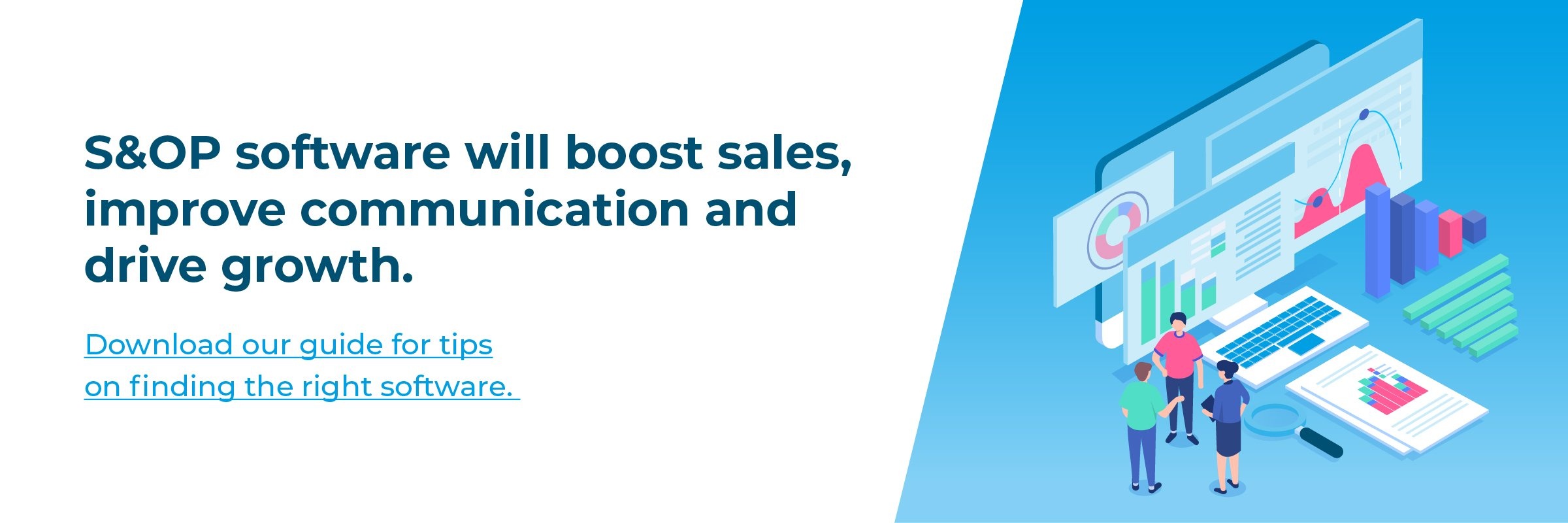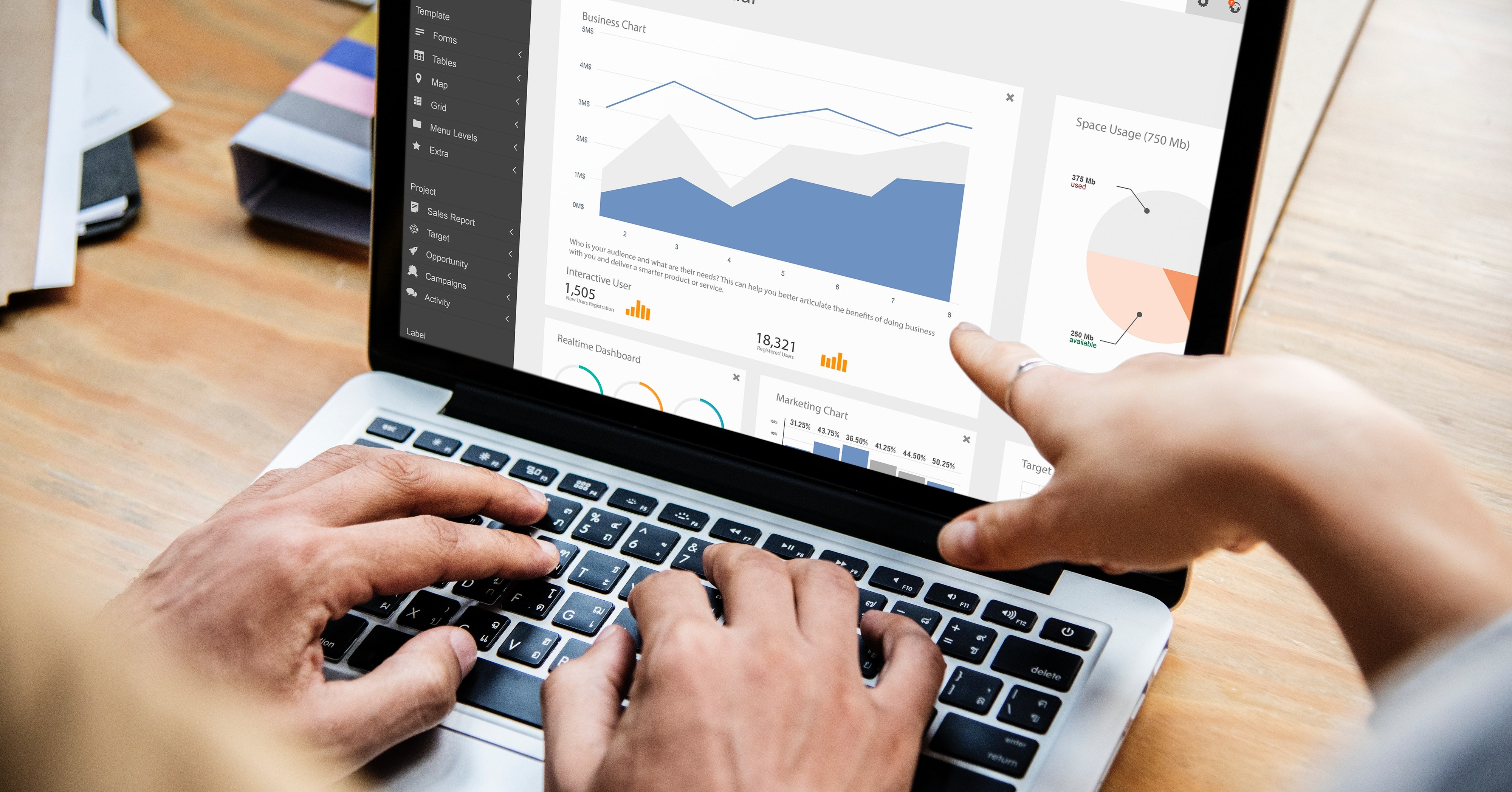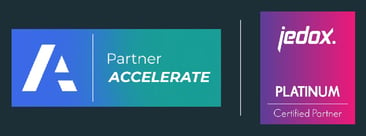Demand planning software that's connected to sales and operations plans can empower your organisation, helping to match the evolving needs of the business by accurately predicting demand for your services and products, which feeds into the rest of the Sales & Operational Planning (S&OP) processes.
Coordination of all the data you require from CRM, ERP and external market data is beyond the capabilities of software like Excel, so demand planning software is crucial.
It can help to resolve challenges such as stock mismanagement, inaccurate forecasting and a failure to adapt to current changes in the market.
So what features should you look for when it comes to the perfect demand planning software?
What features should you look for?
Interactive Statistical Forecasting
Interactive statistical forecasting should be a key feature in demand planning software. This allows you to forecast quantities, all the while tailoring different methods to suit your workflow in an interactive, flexible and user-friendly system.
Furthermore, it enables you to test multiple scenarios and forecast for any period-related intensity, such as seasonality and intermittent demand.
Good demand planning software should be able to predict the future based on historical sales data. It will choose a method of best-fit and propose it to the user, who will then be able to either use it or override it. The user should also be able to apply manual adjustments and test differing scenarios. All of this helps you decide upon a final outcome to enact.
The tool should be intelligent enough to suggest the best course of action and be flexible enough for users to interact with the plan and apply changes.
Segmentation Analysis
Segmentation analysis is a critical component of demand planning software. This feature allows you to divide groups, customers, markets and other factors to support development and planning. This enables planners to view and adjust forecasts and targets for individual segments and monitor KPI's to assess performance.
Workflow
Any demand planning software will have an innovative workflow feature, where you’ll be able to monitor the demand planning process, enable collaboration and speed up the process. It should allow you to track the completion and approval of forecast updates while sending automatic email notifications to relevant parties.
The software should make it easy to automate routine demand planning steps, such as data preparation, which frees planners time to manage exceptions and collaborate fully with peers in sales and operations. This all helps your business to become proactive, adapting to external influences and pressures.
Data Integration
Data integration is an important part of any demand planning software, allowing you to centralise your master data and transaction data from source systems for use in multiple planning applications.
In demand planning you need to connect to multiple data sources, such as ERP for historical data and external data about current and future market demands. The capability to connect to each source system is crucial for the organisation to base decisions on everything known both inside and outside of the organisation.
The latest demand planning tools make this easier for the user, allowing the process to be owned by the business rather than the IT department. A friendly user interface should help to validate the data and allow for flexible manual data corrections.
Consensus Demand Planning
Demand planning software should feature user-friendly planning views that you can tailor to fit the different needs of a variety of business users. This should include the ability to view plans either online, on your mobile or via an Excel spreadsheet. It should also offer aggregation, disaggregation, cost allocation and cell locking.
The software should allow for the multistep process of consensus demand planning by integrating the future baseline demand with sales and marketing activities. This helps to achieve P&L objectives and structure formal demand planning processes.
Your software should also be a secure, easily accessible cloud solution, that facilitates easy collaboration across all departments.
Product Lifecycle
When looking for a demand planning software, the software should allow for easy planning of new products and phase-outs, so that you can visualise your product’s life cycle effectively.
To plan these processes, the software should include like-modelling, curvefit modelling and cannibalisation models. Furthermore, creating specialised and customer models should be an option, without the need for the help of outside experts.
Promotion Planning
In some industries, such as retail, promotion planning is a key driver of demand. An effective demand planning software should be able to optimise the use of marketing tools, strategies and resources to promote a product and service. Having access to trade promotions results as they are happening means that you can adapt in real time to maximise returns.
Master Data Maintenance
New products, customers and promotions need to be adjusted and tracked in real-time, with end-users able to change hierarchy structures in live models.
An effective demand planning solution will use automatic master data management which will connect to the source of data and allow users to modify and map it through a user-friendly interface. Alongside this there should be options to update master data tailored to specific processes and role-based views.
You should also be able to use basic or form-based data entry which includes data validation for all planners.
Reporting, Dashboarding and Alerting
The perfect demand planning software will distribute interactive reports and analysis, which will provide you with alerts and notifications on all data changes and exceptions.
On top of that, all reports, demand plans, forecast KPIs should be presented in dashboards. Each dashboard should be easily accessible and integrated for web, Excel, mobile and PowerPoint.
How Do These Features Benefit You?
These features are crucial to any Connected Sales and Operations Planning (S&OP) solution, and the right choice of software will provide many benefits. They’ll allow you to collaborate with increased speed and integration across departments, with the additional effect of leaving customers with an enhanced user experience.
Demand planning is vital for any business. The right demand planning software will be able to show you the impact of forecast changes, so that you remain agile and able to serve not only your own planning needs but also the demands of your customers and the markets you operate within.
Modern businesses need to plan dynamically and adapt quickly to changes in their market. They need to have real-time analysis of forecast vs actuals, deviations - in ordering patterns for example, exceptions, trends, potential inventory and other key factors. If you choose to link S&OP directly to Finance, key financial statements - P&L, Balance Sheet and Cash Flow can be updated in real-time. Demand planning software can make these things possible, as well as other important benefits:
- Modelling and automated forecasting methods will improve the accuracy of new products, promotions and intermittent demand.
- Connectors and APIs to systems such as ERP and CRM will allow you to integrate with legacy systems.
- Adjustable rules allow you to define forecast rules and segment products effectively.
- Integrating demand plans with related S&OP plans and finance systems will allow you to implement demand planning and processes in record time.
- Improve value-based decision making with demand planning insights, means that you can make improvements on KPI’s like inventory days, for example.
- With all your data held in the same place, modelling and auditing are simple, so that you remain complaint at all times.
Demand planning software will increase the efficiency and speed of your S&OP processes, helping you to create a more intelligent decision-making process, boost the confidence of your shareholders and stay focused on your KPI's. These are all needed to create a successful modern company, one that uses enhanced forecasting and adapting abilities to stay ahead of trends.
Furthermore, further success can be gained as well as altering the very culture of your company. So how do you search for the right planning software for you?
Explore The Right S&OP Software For Your Organisation
You want to find S&OP software that is efficient enough to solve all your connected planning needs, but flexible enough to retain a user-friendly and adaptable approach for your business.
To help you find this perfect software, we’ve created a brilliant checklist you can use to determine which features you need from an S&OP software, including explanations and considerations to help you decide.
Click the link below to get started.



